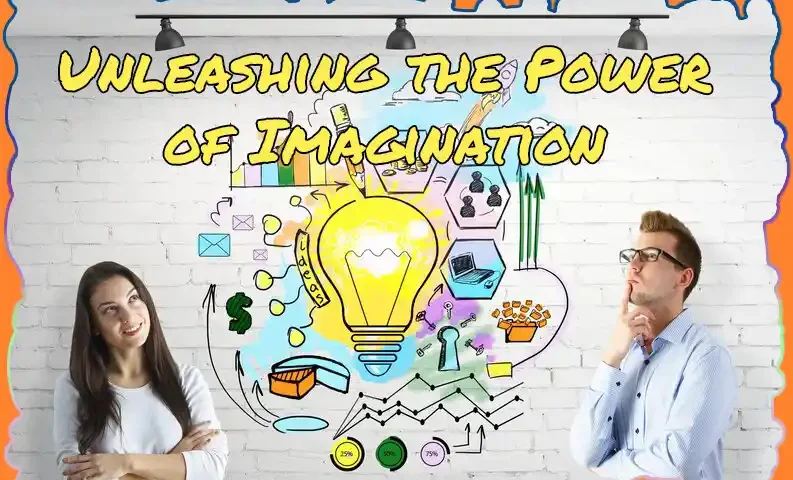
Introduction
Creativity and innovation are two closely intertwined concepts that have the power to drive progress, spark transformation, and shape the world we live in. From artistic endeavors to technological advancements, the fusion of creativity and innovation paves the way for groundbreaking achievements and limitless possibilities.
In this article, we will delve into the essence of creativity, explore the significance of innovation, and uncover ways to harness these forces for personal, professional, and societal growth.
Human history is marked by remarkable leaps forward, ingenious inventions, and revolutionary ideas that have shaped our civilizations.
Behind every groundbreaking discovery, there lies an element of creativity and an innovative mindset. Whether it’s the invention of the wheel, the creation of masterful artworks, or the development of life-changing technologies, creativity, and innovation have been catalysts for progress.
Article related to this topic The most skill I need to begin my small business
Definition of Creativity
Creativity can be described as the ability to think and act in ways that are original, imaginative, and inventive. It involves breaking free from traditional patterns of thought, embracing curiosity, and exploring uncharted territories.
Creativity is not limited to the realm of arts; it extends to various domains, including science, business, and everyday life. It is the driving force behind the birth of novel ideas and the embodiment of human imagination.
Importance of Creativity and Innovation
Creativity and innovation play pivotal roles in individual growth, organizational success, and societal advancement.
They foster adaptability, resilience, and problem-solving skills. In an ever-evolving world, individuals and organizations that embrace creativity and innovation gain a competitive edge, enabling them to adapt to changing circumstances, seize opportunities, and carve new paths.
Benefits of Creativity and Innovation
The benefits of creativity and innovation are multifaceted. They lead to increased productivity, enhanced efficiency, and improved outcomes. They encourage out-of-the-box thinking, inspire collaboration, and cultivate a culture of continuous improvement. Furthermore, creativity and innovation foster personal fulfillment, self-expression, and the fulfillment of unmet needs.
They empower individuals to overcome challenges, explore their passions, and contribute to the betterment of society.
The Creative Process
Creativity is not a random occurrence; it follows a structured process that involves various stages. The creative process typically consists of preparation, incubation, illumination, and verification. During the preparation stage, individuals gather information, explore diverse perspectives, and immerse themselves in the subject matter.
Incubation refers to the subconscious processing of ideas, where connections are formed and insights emerge. The illumination stage marks the “aha” moment when the solution or idea becomes apparent. Finally, in the verification stage, the idea is refined, tested, and implemented.
Techniques to Enhance Creativity
While creativity is an inherent human trait, it can be nurtured and enhanced through various techniques. Some effective methods to boost creativity include:
1. Embrace Divergent Thinking
Divergent thinking involves generating a wide range of ideas and possibilities. It encourages breaking free from conventional norms and exploring unconventional paths. Engage in brainstorming sessions, mind mapping, or free writing to stimulate divergent thinking and unlock new perspectives.
2. Cultivate Curiosity
Curiosity is the catalyst for creativity. Stay curious about the world around you, ask questions, and seek knowledge. Embrace a mindset of lifelong learning and constantly explore different subjects, disciplines, and cultures. Curiosity fuels imagination and opens doors to innovative ideas.
3. Create an Inspiring Environment
Your environment plays a crucial role in nurturing creativity. Surround yourself with inspiring elements such as artwork, books, and nature. Designate a dedicated space for creative pursuits that is free from distractions. Experiment with different settings to find the environment that ignites your creative spark.
4. Practice Mindfulness
Mindfulness helps to quiet the noise of daily life and brings focus to the present moment. Engage in activities like meditation or yoga to cultivate mindfulness. It allows your mind to relax, promotes clarity, and creates space for creative ideas to emerge.
5. Embrace Failure and Learn from Mistakes
Failure is an inevitable part of the creative process. Embrace failure as an opportunity for growth and learning. Analyze mistakes, extract lessons from them, and refine your approach. Remember, even the greatest innovators faced setbacks along their journey.

Overcoming Creative Blocks
Creative blocks are obstacles that hinder the flow of ideas and inspiration. When faced with a creative block, consider the following strategies:
1. Take a Break
Sometimes, stepping away from the project at hand can help refresh your mind and gain a new perspective. Engage in activities that bring you joy or indulge in hobbies unrelated to your creative endeavor. Often, the solutions come when you least expect them.
2. Seek Inspiration
Expose yourself to diverse sources of inspiration. Read books, watch movies, attend art exhibitions, or engage in conversations with people from different backgrounds. Drawing inspiration from different domains can spark innovative ideas.
3. Collaborate and Seek Feedback
Collaboration can invigorate creativity. Engage in brainstorming sessions or seek feedback from peers or mentors. Other perspectives can provide fresh insights and challenge your thinking, leading to breakthroughs.
Innovation in Business
Innovation is a driving force behind business success. Organizations that foster a culture of innovation are more likely to adapt to changing market dynamics, identify new opportunities, and gain a competitive edge. To promote innovation within a business:
1. Encourage a Growth Mindset
Foster a culture where employees feel empowered to take risks, experiment, and embrace new ideas. Encourage a growth mindset, where failures are seen as learning opportunities and employees are motivated to continually improve and innovate.
2. Foster Cross-Functional Collaboration
Break down silos and encourage collaboration across different teams and departments. Cross-functional collaboration brings together diverse perspectives, expertise, and skill sets, fostering an environment conducive to innovation.
3. Invest in Research and Development
Allocate resources to research and development initiatives. Support employees in exploring new technologies, methodologies, and ideas. Investing in R&D helps organizations stay at the forefront of innovation and discover breakthrough solutions.
Examples of Innovative Companies
Numerous companies have embraced creativity and innovation, leading to remarkable achievements. Here are a few notable examples:
1. Apple Inc.
Apple has revolutionized the consumer electronics industry with its innovative products and design. From the Macintosh computer to the iPhone and iPad, Apple’s commitment to pushing the boundaries of technology and user experience has made it a global leader in innovation.
2. Tesla Inc.
Tesla’s visionary approach to electric vehicles has transformed the automotive industry. By combining cutting-edge technology, sustainable energy solutions, and sleek design, Tesla has redefined what it means to drive an electric car.
3. Airbnb
Airbnb disrupted the hospitality industry by introducing a peer-to-peer accommodation marketplace. By leveraging the sharing economy and embracing the concept of “home-sharing,” Airbnb opened up new possibilities for travelers and hosts alike, challenging traditional hotel chains.
The Role of Creativity in Problem-Solving
Creativity is a valuable asset in problem-solving, enabling individuals to think beyond conventional solutions and discover innovative approaches. By fostering creativity, problem-solvers can:
- Identify alternative perspectives and viewpoints.
- Generate unique ideas and solutions.
- Overcome challenges through unconventional thinking.
- Adapt to changing circumstances and find new opportunities.
- Collaborate effectively to address complex problems.
Fostering Creativity in Education
Education plays a pivotal role in nurturing creativity among individuals of all ages. By incorporating creative practices into the educational system, we can equip students with valuable skills for the future. Strategies to foster creativity in education include:
1. Encouraging Artistic Expression
Integrating arts education into the curriculum allows students to explore their creative side and develop skills such as visual thinking, storytelling, and problem-solving.
2. Promoting Critical Thinking
Critical thinking encourages students to analyze information, question assumptions, and develop independent thought. By teaching students to think critically, we empower them to approach challenges with innovative solutions.
3. Embracing Project-Based Learning
Project-based learning provides students with opportunities to tackle real-world problems, work collaboratively, and develop creative solutions. It encourages hands-on learning and cultivates critical thinking and problem-solving skills.

The Relationship Between Creativity and Productivity
Creativity and productivity are not mutually exclusive; in fact, they are closely intertwined. Here’s how creativity enhances productivity:
- Creative approaches can streamline processes, eliminate inefficiencies, and improve productivity.
- Creative problem-solving enables individuals to find faster, more effective solutions to challenges.
- A stimulating and creative work environment fosters employee engagement and motivation, leading to increased productivity.
- Innovations resulting from creative thinking can revolutionize industries, boost economic growth, and create new opportunities.
Creativity in the Digital Age
The digital age has opened up new avenues for creative expression and innovation. The internet, social media, and digital tools have democratized creativity, allowing individuals from all walks of life to showcase their talents, collaborate globally, and reach wider audiences.
From content creators on platforms like YouTube to innovative startups leveraging technology, the digital age has become a playground for creative minds.
Ethical Considerations in Creativity and Innovation
As creativity and innovation continue to shape our world, it is important to consider ethical implications. Some key ethical considerations include:
- Respect for intellectual property rights and avoid plagiarism.
- Ensuring privacy and data security in the digital realm.
- Promoting diversity and inclusivity in creative endeavors.
- Balancing ethical boundaries in areas such as artificial intelligence and genetic engineering.
- Striving for sustainability and responsible innovation to minimize negative impacts on the environment.
Conclusion
Creativity and innovation are catalysts for personal, professional, and societal growth. By embracing these forces, individuals can unlock their full potential, organizations can drive progress, and societies can thrive in a rapidly evolving world.
Nurturing creativity and fostering innovation requires an open mind, a willingness to challenge norms, and a commitment to continuous learning. By harnessing the power of imagination, we can unlock limitless possibilities and shape a brighter future.
FAQs
- How can I enhance my creativity?
- Embrace curiosity and explore diverse subjects.
- Engage in activities that inspire and challenge your thinking.
- Practice techniques like brainstorming and mind mapping.
- Surround yourself with an inspiring environment.
- What is the difference between creativity and innovation?
- Creativity refers to the generation of new ideas and perspectives.
- Innovation involves implementing those ideas and bringing them to life.
- Why is creativity important in business?
- Creativity fuels innovation, which leads to competitive advantage.
- It allows businesses to adapt, identify opportunities, and solve problems.
- Can creativity be learned?
- Yes, creativity can be nurtured through various techniques and practices.
- Everyone has the potential to tap into their creative abilities.
- How can creativity be applied in everyday life?
- Embrace creative hobbies or activities.
- Approach challenges with a fresh perspective.
- Seek opportunities for innovation in daily tasks and routines.




